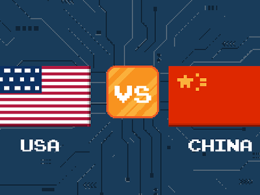by Hubert Marleau, Market Economist, Palos Management
The polymarket odds of tariffs surviving the ruling in their current form plunged to less than 30% this week, with traders now pricing in a clear chance that the Supreme Court could strike down or sharply limit Trump’s authority in this domain and return the matters to Congress. On Wednesday, the Court heard oral arguments on the case, challenging the broad array of his global tariffs, as it questioned whether he had the authority to impose them under the International Emergency Economic Powers Act and south justification for the breadth of his executive trade powers.
In order for the Trump administration to win this case totally, it will have to persuade the Supreme Court that tariffs are a logical tool to carry out and steer foreign policy, in which the President's authority is very broad, and argue that the revenues are merely incidental. Indeed, without any input from Congress it just might be a bridge too far, for 3 reasons:
- The Administration has boasted on many occasions that tariffs have boosted government receipts that could one day replace income taxes as a way to pay bills. Yet the Constitution has assigned the power to raise revenue via tariffs and taxes to Congress, a bedrock principle of American governance. In fact, the Lower Courts have already ruled against Trump’s tariffs.
- Greg Ip of the WSJ wrote: “It isn’t the mere fact of the tariffs that upsets the constitutional order, but their magnitude and breadth. Opponents argue they violate 2 principles key to the separation of powers. Under the ‘major questions doctrine,’ presidents may not read authority with broad economic or political ramifications into statute without clear guidance fromCongress. Under the ‘nondelegation doctrine,’ Congress may not cede its legislative duties to anyone else.” Put simply, the power to impose tariffs on any product from any country for any length of time does not wash well with what has always been the core power of Congress.
- While popularity should not be given consideration, the fact remains that the Trump approval rating on imported goods is only 33%, according to a recent poll conducted by the Washington Post-ABC News-Ipsos poll of form October 24-28, 2025. Judges are humans.
What Took Place in the week ended November 7?
Optimism over a US-China trade truce and a surging amount of AI deals gave investors reasons to trust that November will live up to its reputation for being the strongest month for equities. As a result, Wall Street stock futures were in positive territory on Sunday, suggesting that the October effect is set to continue.
On Monday, a renewed advance in the megacaps brought about a 0.2% rise in the S&P 500 to 6852, despite the fact that over 300 firms in the benchmark actually retreated because the closely followed manufacturing index had slipped into contraction territory. Meanwhile, complaints of respondents to the ISM survey were loud and clear that the tariffs had raised costs, depressed sales and pressured them to lay off employees. The steel and aluminium tariffs are killing us, a manufacturer told ISM.
On Tuesday, the long-awaited correction dragged the S&P 500 down sharply by 1.9% to 6722 amid wide concerns that the AI boom had gone far enough, questioning high tech valuations and nervousness as to how much tech companies were spending on AI without generating an appropriate return on their humongous investments, thereby turning momentum into gravity. Partially fuelling the anxiety were comments from CEOs of Goldman Sachs, Capital Group and Morgan Stanley who told the audience at the Global Financial Leaders’ Investment Summit in Hong Kong that a pullback in the equity markets should be expected, being a normal thing to happen when valuations are challenging. And there was the regulatory filing of Michael Burry’s Scion Asset Management, the hedge fund manager that shorted the housing market before the 2008 crash, that showed that it had taken a big bet against Nvidia and Palantir.
On Wednesday, the S&P 500 staged a solid rebound, closing higher by 0.4% to 6796, clawing back some of the sharp losses in technology stocks from the day before, in part because privately run businesses had created 42,000 jobs more than expected in October, registering the first increase in 3 months, and reflecting the possibility that the weakening labour market might be stabilising. Moreover, numerous stocks reacted favourably to oral arguments presented to the Supreme Court that challenged the broad array of Trump’s global tariffs.
On Thursday, AI jitters returned in a week that had been whipsawed by a sensational headline from the Challenger Report, titled “JOB CUTS SURPASS 1MILLION; HIGHEST OCTOBER TOTAL SINCE 2003. COMPANIES CITE COST-CUTTING, AI IN OCTOBER.” Unfortunately, the initial reaction was a volatile change in sentiment about the labour market, which was partially unjustifiable, even though the number of jobs lost had outpaced new hires lately. First, the actual number of layoffs during the month was 153,074, occurring in warehouse and technology industries because of automation and robotics, which are boosting productivity. Second, hiring plans were actually pretty good in October, considering factors like the government shutdown and tariffs and Bloomberg estimates for jobless claims were only 218,000 in the week ended October 25: a low reading. The S&P 500 shed 1.1%, closing at 6720, more from sentiment than real fundamentals: an excuse to unload crowded trades
On Friday, a preliminary survey from the University of Michigan showed that the mood of U.S. households had darkened as consumer sentiment surrounding the shutdown had fallen in October to record-low levels. Fortunately, rumours that the shutdown may be coming to an end soon helped the S&P 500 to get by with a small gain of 0.1 % and close the day at 6729.
The Near-Term Stock Market Outlook:
Last week I wrote: “ From a contrarian point of view, the S&P 500 is due for a pullback because it is more than 10% above its 200-day moving average while the Investors Intelligence Bull/Bear Ratio is over 4.00, a combination that suggests that there are too many bulls in the play pen. Nonetheless, I’m not shying away from my prediction of 7000 by year-end, for I agree with Jerome Powell, Chairman of the Federal Reserve, that the AI boom is not a speculative bubble like the dot-com era, when many companies were flyers of ideas without proof of concept rather than genuine businesses, generating revenue and earnings.”
The U.S. stock market has roared dizzyingly past every yellow traffic light en route to record highs after record levels from the lows of last April, manifesting the durability of this cycle, even though the ‘‘Buffett Indicator” has shown throughout the piece that the monetary value of equity markets, presently around $72 trillion, has become more than twice the size of the economy. In this connection, numerous commentators have raised red flags about the fact that the AI boom and related trades have taken all of the oxygen out of the market.
The long awaited pullback has come, which was both needed and overdue, because of the thesis that rich valuations don’t tussle well with returns on investments that are not immediate. While I understand the reasoning behind this concern, the ongoing correction has a lot more to do with falling liquidity, stemming from the amassing of money by the Treasury, which has actually sapped the private market. In this connection, retail and novice investors alike have decided to skip the dip, forcing Main Street to jive with Wall Street.
In my judgement, at 6600 for the S&P 500, enough froth has been removed to allow the big tech stocks to hold their own based on the strength of their earnings to indirectly support the wider market.
(N.B. Canada’s 2025 federal budget is colourfully purple, being a mixture of austerity and indulgence, focusing on shifting routine government spending on operations to capital investment that will favour housing, national security, productivity and infrastructure. In this regard, the government is projecting a series of budgetary deficits that should peak this fiscal year at $78.3 billion, accounting for 2.5% of nominal GDP, a percentage lower than other major countries, and below the compelling notion that the fiscal deficit- to- GDP ratio shouldn’t be higher than 3%, if its intention is to maintain the Rogoff hard-and-fast rule that government debt-to-GDP ratios should always stay below 90%, thereby not letting fiscal policy get out of hand. Currently the crucial Federal debt ($1.347 trillion) to N-GDP ($3.163 trillion)) ratio stands around 50%.
This budget may not have done enough to pivot the Canadian economy from consumption to investments like reducing corporate income taxes or raising the depreciation allowance to 100% on the corporate side; or eliminating capital gain taxes or reducing dividend taxes on the household side. The fact remains, however, it remains that the Carney-Champagne duet has presented a credible strategy that tests the willingness of Canadians to get through this tough period.)














